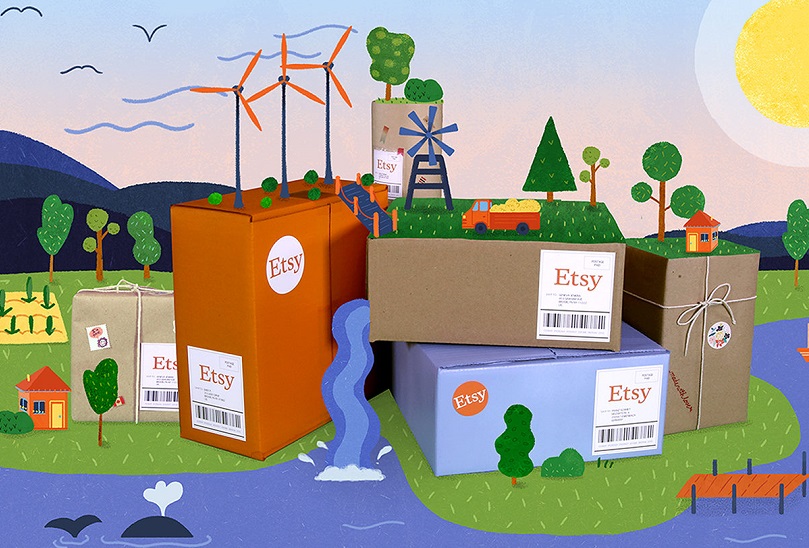Etsy to offset 100 per cent of carbon emissions from shipping

US-based craft marketplace Etsy is going green by offsetting 100 per cent of the carbon emissions it generates from shipping.
The marketplace, which caters to sellers offering hand-made and vintage items, claims to be the first major online shopping destination to do so.
In a company blog post published last week, Etsy said it has both the power and the responsibility to help mitigate the environmental impact of its operations.
“These days, when all it takes are a few clicks and – like magic – the handcrafted bamboo lamp of your dreams arrives on your doorstep, it can be easy to forget that quick, convenient delivery has a real effect on our planet,” the company wrote.
The announcement comes just 10 days after online retail giant Amazon revealed plans to make 50 per cent all shipments net zero carbon by 2030. The project, called Shipment Zero, involves the use of electric vehicles, aviation bio fuels, reusable packaging and renewable energy to offset the carbon footprint of the billions of items it ships around the world each year.
As discussions around climate change become increasingly dire – the United Nations recently called 2019 a “critical year” to take effective action – many businesses, including retailers, are looking for ways to reduce their impact.
The Warehouse Group in New Zealand recently became the third retailer in the world to be certified as a carbon neutral company by the global standard, carboNZero, while Kathmandu has committed to reducing its emissions to 20 per cent below 2012 levels by 2020.
Many retailers, like Etsy, are focusing on reducing the impact of transporting goods around the world and to their customers, which is a major contributor to an item’s overall carbon footprint.
A 2013 study by the Massachusetts Institute of Technology’s Centre for Transportation and Logistics found that ‘impatient modern shoppers’ – those who research a purchase both online and in-store, buy online, select fast shipping via air and return the item online – have the highest carbon footprint of any type of shopper.
The biggest carbon contributor was the shopper’s own mode of transportation during the offline research process, followed by the item’s packaging for shipping. Freight transportation was the third biggest contributor to this type of shopper’s overall carbon footprint.
And while the study found that traditional shoppers – those who make multiple trips in-store to research a purchase, buy in-store and return in-store – freight transportation contributed a very small amount to their overall carbon footprint.
So if retailers can reduce or offset carbon emissions generated by shipping, they can make online shopping a much more eco-friendly proposition.
Comment Manually
You must be logged in to post a comment.

No comments